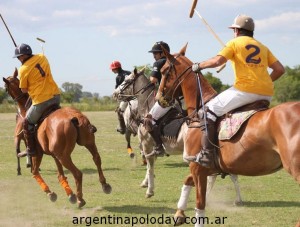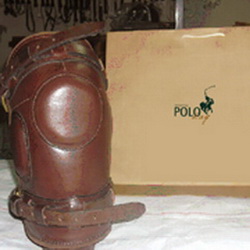Si bien el polo con caballos es la versión más conocida de este milenario deporte, no es la única. En algunos países asiáticos, como Tailandia, Sri Lanka, India y Nepal, se juega al polo sobre elefantes, una variante bastante diferente del polo tradicional (para conocer las reglas del polo con caballos ver aquí).
Los orígenes del polo sobre elefantes se rastrean a principios del siglo pasado en la India. Sin embargo, las bases de este deporte fueron sentadas recién en 1982 en Nepal, con la fundación de la World Elephant Polo Association y la celebración del World Elephant Polo Tournament, torneo que se disputa cada mes de noviembre en ese país.
Actualmente, el polo sobre elefantes es una atracción sumamente popular en Tailandia donde se celebra cada año la King’s Cup Elephant Polo que ya va por su duodécima edición, y que convoca a gran cantidad de personas, entre aficionados y curiosos, que no se quieren perder la oportunidad de presenciar tamaño espectáculo.
Al momento de señalar las diferencias entre el polo a caballo y el polo sobre elefantes, hay que mencionar la mas importante de ellas: en el polo sobre elefantes son dos personas las que van montadas en el animal: el jugador y el mahout. Los mahout, tienen experiencia en el entrenamiento de elefantes, y son los responsables de darle las órdenes al animal. El rol del jugador es pensar las jugadas e indicarle al mahout los pasos a seguir para que pueda guiar al animal. El trabajo en equipo, y el buen entendimiento entre el jugador y el mahout, es fundamental en el polo sobre elefantes.
En cuanto a las particularidades específicas del polo sobre elefantes, hay que mencionar que el partido de polo se juega en una cancha de césped de aproximadamente 100 a 120 metros de largo por unos 60 a 80 metros de ancho. Del partido participan dos equipos con tres elefantes cada uno y sobre cada animal van montados un jugador y un mahout. Los partidos se juegan a dos chukkas de 10 minutos cada uno con un intervalo de 15 minutos. Los equipos deben cambiar de lado al finalizar el primer chukka y gana el equipo que logra marcar el mayor número de tantos.
Del mismo modo que en el polo con caballos, el jugador es quien maneja el taco de polo, que mide más de 2 metros de largo. La bocha solo puede ser golpeada con el taco, si el elefante la llegara a tocar con la trompa se considera un falta. También se considera una infracción si el elefante se recuesta delante de la línea de gol bloqueando el paso de la bocha.
Un dato interesante para tener en cuenta es que, a pesar de las críticas que genera este deporte de parte de las asociaciones protectoras de animales, todos los torneos de polo sobre elefante se realizan con fines benéficos y los fondos recaudados son destinados a las entidades que se ocupan de la conservación de estos animales.
Mas sobre polo: www.argentinapoloday.com.ar
//
While horse polo is the most commonly known version of this historic sport, it is not the only version. In some Asian countries, like Thailand, Sri Lanka, India and Nepal, polo using elephants is actually played and is quite a different to the traditional game. (To learn the rules of polo played with horses see here).
The origins of elephant polo date back to early part of last century in India. However, the foundations of the sport were laid only in 1982 in Nepal, with the foundation of the World Elephant Polo Association and the celebration of the World Elephant Polo Tournament, a tournament that is held every November in the country.
Currently, elephant polo is an extremely popular attraction in Thailand where it is celebrated every year with the King’s Cup Elephant Polo which is now in its twelfth year, and which attracts lots of people, both fans and the curious, who do not want to lose the opportunity to witness the such a show.
With respect to the differences between playing polo with horses and that of polo with elephants, we have to mention the most important difference: in elephant polo there are two people mounted on the animal: the player and the ‘mahout’. The mahout, has experience in training elephants, and is responsible for giving orders to the animal. The role of the player is to think about the game and indictate to the mahout the steps to follow so he can guide the animal. Teamwork and a good understanding between the player and the mahout, is essential in elephant polo.
As to the specific characteristics in a game of elephant polo, we have to mention it is played on a grass court between 100 to 120 meters long by 60-80 meters wide. The game involves two teams with three elephants in each and each animal is ridden by a player and a mahout. Games are played in two chukkas of 10 minutes each with an interval of 15 minutes. Teams must switch sides after the first chukka and the team that manages to score the most points wins.
Just as in horse polo, is the player who controls the polo mallet, which measures 2 metres in length. The ball can only be hit with a taco, and if the elephant comes into play with his trunk it is considered a penalty. It is also considered a violation if the elephant lies down in front of the goal line blocking the way of the ball.
An interesting fact to note is that, despite the criticism generated by this sport from the animal welfare groups, all polo tournaments are for charity and the proceeds are allocated to entities dealing with the conservation of these animals.
More about polo: www.argentinapoloday.com.ar









